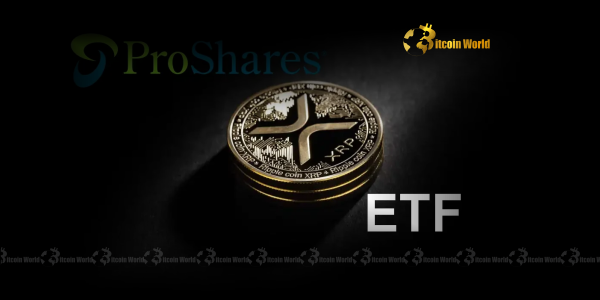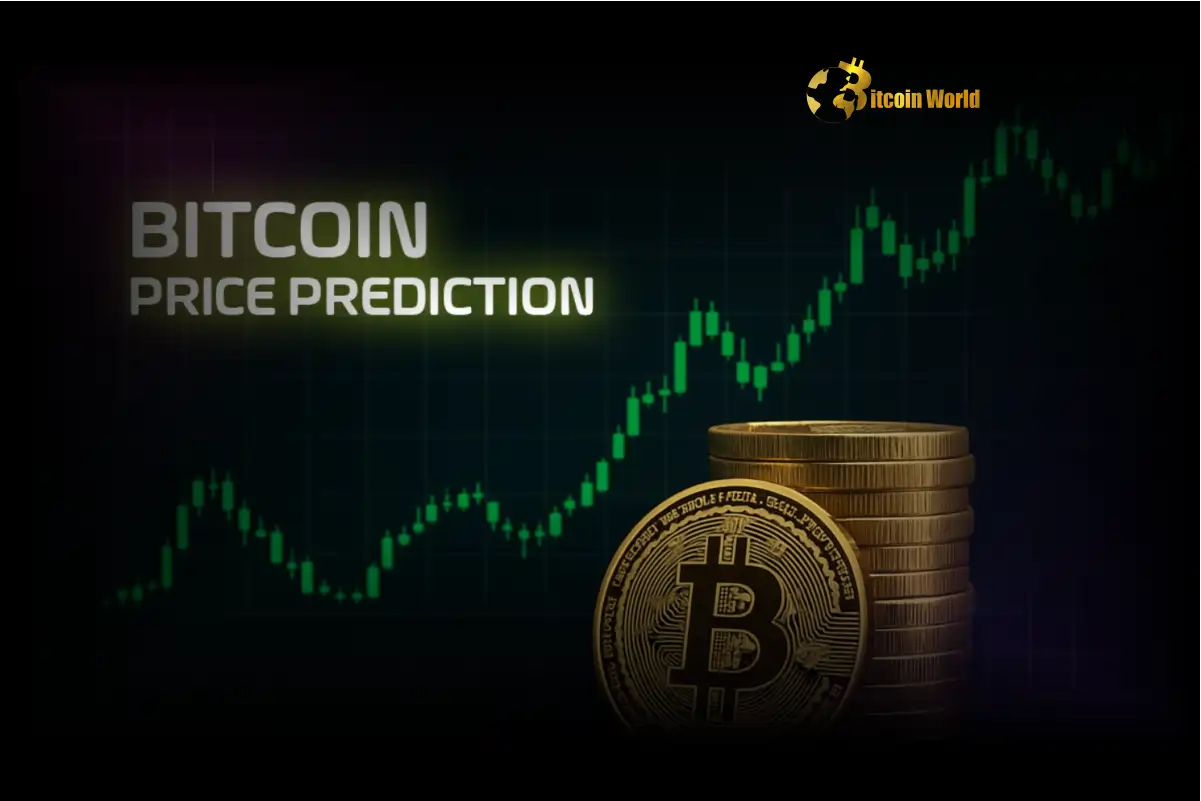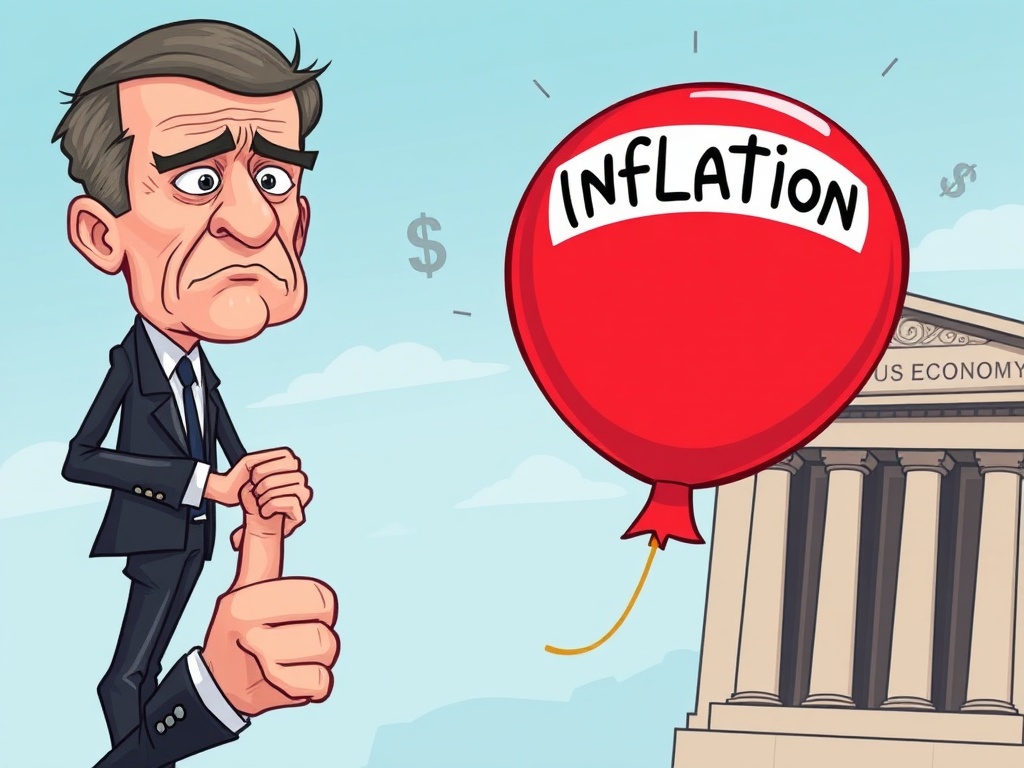BitcoinWorld

XRP ETF: ProShares’ Pivotal DTCC Registration Unlocks New Possibilities
The cryptocurrency world is abuzz with the latest development concerning the long-anticipated XRP ETF. For years, investors and enthusiasts have dreamed of easier, regulated access to digital assets through traditional investment vehicles. Now, a significant step has been taken that could bring an XRP ETF closer to reality, sparking both excitement and a healthy dose of caution.
What’s the Buzz Around the XRP ETF?
The recent news that ProShares XRP‘s Ultra XRP ETF has been registered with The Depository Trust and Clearing Corporation (DTCC) under the ticker “UXRP” has sent ripples through the crypto community. This isn’t just any registration; it signals a formal entry into the plumbing of traditional finance, making it a pivotal moment for those eyeing a regulated XRP ETF.
- What is the DTCC? The DTCC is a vital piece of infrastructure in the financial markets. It provides clearing, settlement, and information services for equities, corporate and municipal bonds, unit investment trusts, government and mortgage-backed securities, money market instruments, and over-the-counter derivatives. Essentially, it’s where securities are processed and settled.
- Why is this significant? Registration with the DTCC means the security has a CUSIP number, making it identifiable and tradable within the traditional financial system. It’s a prerequisite for any security that aims to be listed on major exchanges.
- What it isn’t: Crucially, as the initial report highlighted, this DTCC registration is entirely independent of the Securities and Exchange Commission (SEC) review process. It does not guarantee listing or approval from the SEC. Think of it as getting a passport for a foreign country – you have the document, but you still need a visa (SEC approval) to enter and stay.
ProShares XRP‘s Strategic Play: Understanding the UXRP Offering
ProShares is no stranger to the cryptocurrency ETF space, having been a pioneer with the first Bitcoin futures ETF. Their move to register an Ultra XRP ETF speaks volumes about their strategy and belief in the market’s demand for such products.
- Who is ProShares? ProShares is a leading provider of ETFs, known for offering a diverse range of products, including leveraged and inverse ETFs. Their expertise lies in structuring financial products that allow investors to gain exposure to various asset classes in a regulated environment.
- What is an “Ultra” ETF? The “Ultra” designation, combined with the “2x leveraged” detail, means this ETF aims to deliver twice the daily performance of XRP. If XRP goes up 1%, the ETF aims to go up 2%. Conversely, if XRP drops 1%, the ETF aims to drop 2%. This amplification of returns (and losses) makes it a high-risk, high-reward product, typically suited for sophisticated investors or short-term trading strategies.
- Why a leveraged cryptocurrency ETF? Offering a leveraged product signals confidence in XRP’s potential for significant price movements. It also caters to a segment of the market looking to amplify their exposure without directly holding the underlying asset or engaging in complex derivatives.
Decoding DTCC Registration: A Crucial Step, Not the Finish Line
While the DTCC registration is a necessary step in the lifecycle of any publicly traded security, it’s essential to understand its specific role and limitations in the context of a cryptocurrency ETF.
- The DTCC’s Role: The DTCC acts as a central clearinghouse and depository. Its registration process primarily ensures that a security meets the operational and technical requirements for trading and settlement within the traditional financial system. It’s about infrastructure and plumbing, not about regulatory approval of the underlying asset or the investment vehicle’s suitability for public investors.
- Independence from SEC: This is the critical distinction. The DTCC does not evaluate the investment merits of a security or its compliance with securities laws. That falls squarely within the purview of the U.S. Securities and Exchange Commission (SEC). The SEC’s mandate is investor protection, market integrity, and capital formation.
- What’s Next After DTCC Registration? For the Ultra XRP ETF to become truly accessible to the public, it must still navigate the SEC’s rigorous review process. This involves filing an S-1 registration statement (or similar) and addressing any concerns the SEC might have regarding investor protection, market manipulation, custody, and valuation of the underlying digital asset.
The Road Ahead: Navigating SEC Approval for Cryptocurrency ETFs
The path to SEC approval for any cryptocurrency ETF, especially one directly tracking a digital asset like XRP, has historically been fraught with challenges. The SEC has long expressed concerns about market manipulation, custody, and the nascent nature of crypto markets.
- A History of Caution: For years, the SEC resisted approving spot Bitcoin ETFs, citing concerns that the underlying market was susceptible to manipulation and that adequate investor protections were not in place. It wasn’t until January 2024 that the first spot Bitcoin ETFs were finally approved, following extensive efforts by applicants to address these concerns.
- The Ripple vs. SEC Factor: XRP’s unique situation, stemming from the ongoing lawsuit between Ripple Labs and the SEC regarding whether XRP is an unregistered security, adds another layer of complexity. While a U.S. court ruled that XRP itself is not a security when sold to the general public on exchanges, the SEC continues its case regarding institutional sales. The clarity (or lack thereof) on XRP’s regulatory status is a significant hurdle for an XRP ETF.
- Leveraged ETF Scrutiny: Beyond the asset itself, a 2x leveraged ETF faces additional scrutiny. Leveraged products are inherently more complex and carry higher risks, making the SEC particularly cautious about their accessibility to retail investors.
- Key Considerations for SEC:
- Market Surveillance: Can the ETF issuer demonstrate sufficient surveillance-sharing agreements to prevent market manipulation?
- Custody: How will the underlying XRP be securely held and audited?
- Valuation: How will the ETF accurately price XRP in a volatile market?
- Investor Protection: Are the risks of a leveraged crypto product adequately disclosed and understood by potential investors?
What This Means for Investors and the Broader Crypto Market
The registration of ProShares’ Ultra XRP ETF with the DTCC, while not final approval, signifies growing institutional interest and infrastructure development around digital assets.
- Potential Benefits for Investors:
- Accessibility: If approved, an XRP ETF would allow traditional investors to gain exposure to XRP through regulated brokerage accounts, without needing to navigate crypto exchanges, wallets, or private keys.
- Diversification: It offers another avenue for portfolio diversification within the digital asset space.
- Liquidity: ETFs are typically highly liquid, offering ease of entry and exit.
- Leveraged Exposure: For those with a high-risk tolerance and a bullish outlook, the 2x leverage offers amplified returns.
- Challenges and Risks:
- Volatility: XRP, like all cryptocurrencies, is highly volatile. A leveraged ETF amplifies this volatility, leading to potentially significant losses.
- Regulatory Uncertainty: The ongoing SEC lawsuit and general regulatory ambiguity surrounding crypto remain major risks.
- Tracking Error: Leveraged ETFs are designed to achieve their stated objectives over a single day. Over longer periods, compounding can lead to significant deviations from the underlying asset’s performance.
- Fees: ETFs come with management fees, which can eat into returns.
- Impact on the Broader Market: The continued push for cryptocurrency ETFs, including for assets beyond Bitcoin and Ethereum, indicates a maturing market and increasing institutional comfort. Each step towards traditional finance integration can pave the way for broader adoption and legitimacy for the entire crypto ecosystem. It also highlights the growing demand from investors for regulated crypto investment products.
Actionable Insights:
For investors watching this space, here are some key takeaways:
- Stay Informed: Follow SEC filings and announcements closely. The S-1 filing, when it comes, will offer critical details.
- Understand the Product: A 2x leveraged ETF is not for everyone. Ensure you fully grasp the risks before considering investment.
- Monitor Regulatory Landscape: The outcome of the Ripple vs. SEC case will have significant implications for XRP’s future and the likelihood of an ETF.
- Diversify: Don’t put all your eggs in one basket, especially in a volatile market.
Conclusion:
ProShares’ registration of its Ultra XRP ETF with the DTCC marks a notable, albeit preliminary, stride towards mainstream financial integration for XRP. It underscores the persistent demand for regulated crypto investment products and ProShares’ continued pioneering role in this arena. While the DTCC registration is a crucial operational milestone, the ultimate hurdle remains the stringent review and potential SEC approval. The journey for an XRP ETF is far from over, filled with regulatory complexities and market dynamics. However, each step forward, like this DTCC registration, fuels optimism for the future of crypto in traditional finance, signaling a slow but steady march towards broader acceptance and accessibility for digital assets. The coming months will be critical in determining if this bold move by ProShares XRP truly unlocks new possibilities for investors seeking exposure to XRP.
To learn more about the latest cryptocurrency ETF trends, explore our article on key developments shaping institutional adoption in the crypto market.
This post XRP ETF: ProShares’ Pivotal DTCC Registration Unlocks New Possibilities first appeared on BitcoinWorld and is written by Editorial Team





